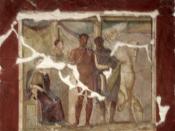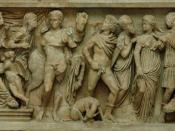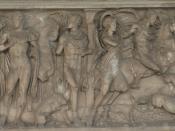Justin Houman
603398301
Comparative Literature 2BW
Discussion 1B
November 25, 2008
Relationship Between Love and Fate in "Phaedra"
In "Phaedra", Jean Racine uses the model of a Greek tragedy in order to express his personal views regarding fate. Racine's Jansenist upbringing had given him a strong sense of fate, as people's destinies were believed to be predetermined. Jansenists believe that although a person has the ability to exercise free will in individual acts, they ultimately cannot change the course that God has set for them. Racine's unique views have been exhibited in his play "Phaedra", where he uses Venus, the goddess of love, as the driving force behind predestination. Phaedra is a submissive object at the disposal of Venus, who commences this tragic play by instigating Phaedra's unlawful desire for her chaste stepson Hippolytus. Phaedra makes every effort to overpower her emotions, going as far as wanting to die rather than act on these forbidden feelings.
In addition, Phaedra, the daughter of Minos and Pasiphäe, has descended from a line of women of unnatural passions, as her mother had been known for giving birth to a Minotaur through her unnatural attraction to a bull. In this sense, Phaedra is portrayed as the victim rather than the culprit because her misfortunes are a result of Venus' wrath as well as a tainted lineage. During the turning point of the play in Act 3, Scene 1, Phaedra's shameful desires transform into empowering emotions as she becomes more accepting of her feelings and concocts a complex scheme to court Hippolytus. However, even though she exercises free will by acting on her emotions, she is still at the mercy of Venus and fate. Thus, although Phaedra is in conflict with herself, her actions cannot alter the forces of destiny, as she is a...


